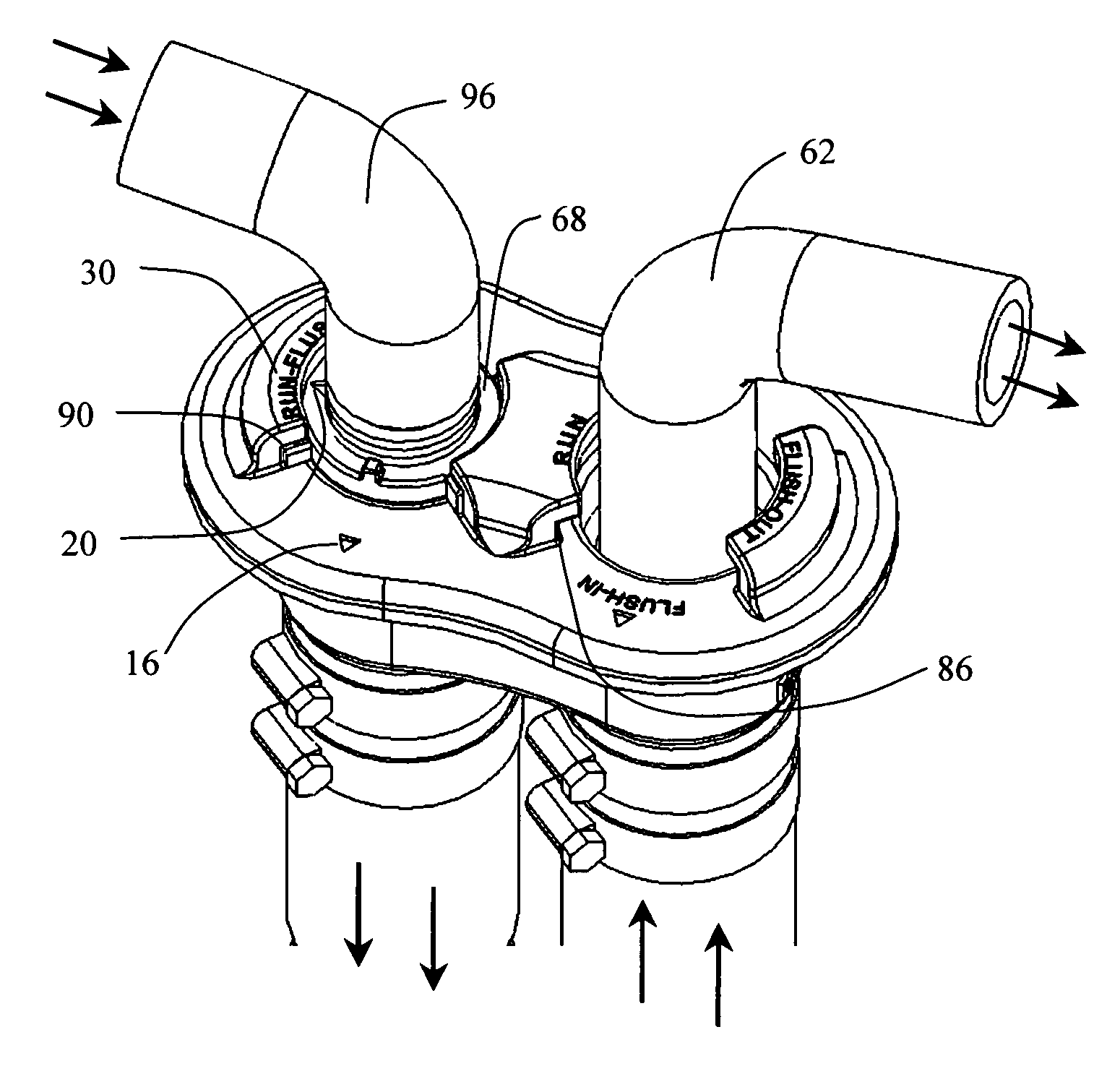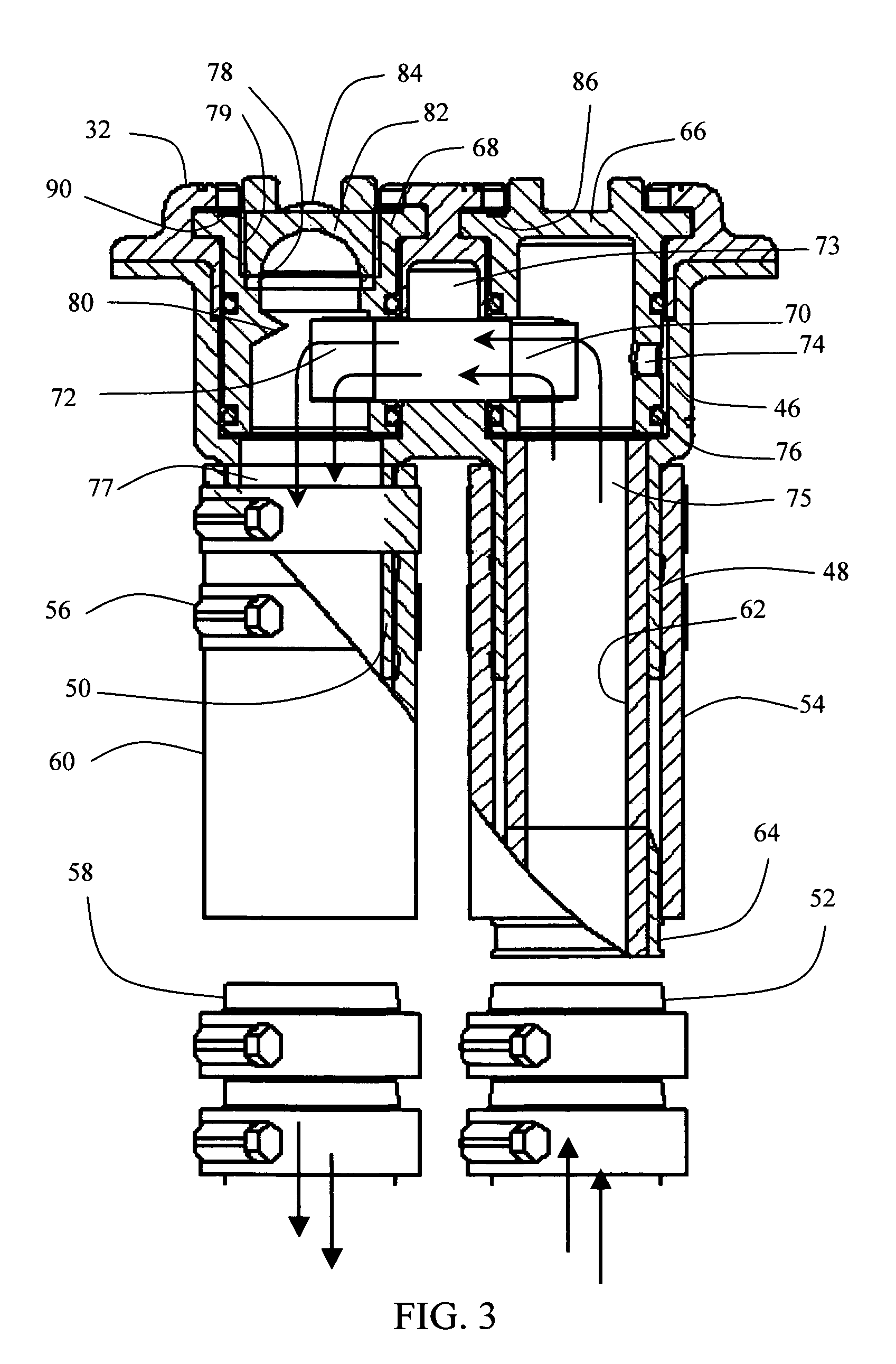The combination of complicated operational procedures, fluid flow design and flow design components, and the physical locations of such prior art devices often presents the risk that an improper operational procedure or an unknown malfunction of a fluid flow component will
expose the vessel to taking on
seawater, not functioning correctly under normal operation which can result in ruining a
marine engine and / or outdrive components, or at the very least, not properly completing the task for which they are designed, that is, thoroughly flushing a marine engine.
While these devices avoid the need for manual intervention, the constant
exposure to corrosive environments,
abrasive contaminants such as sand and mud, and larger floating debris, can lead to component failure,
valve seat failure, as well as failure due to large debris being trapped within the device.
This all leads to an inherently unreliable
fluid control system over the life of the vessel.
The other significant limitation to both of these devices is that they cannot be used with an inboard / outboard marine engine that has the
coolant pump in the outdrive.
If fluid from the outdrive is not allowed to continue to flow, the pressure on the outlet of the outdrive pump will increase and the pump will, in a matter of just a few minutes, fail.
However, both of these devices rely upon complicated assemblies and components.
As with the previously mentioned devices, the constant
exposure to corrosive environments,
abrasive contaminants such as sand and mud, and larger floating debris, can lead to component failure,
valve seat failure, as well as failure due to large debris being trapped within the devices.
This all leads to an inherently unreliable
fluid control system over the life of the vessel.
Patti's device consists of a long tubular
assembly having a shutoff valve between a
seawater inlet and outlet, a second shutoff valve between a freshwater inlet and outlet, and a complicated process for changing from normal operation to flushing and then back again to normal operation.
However, the device is dramatically more complicated, which makes it more susceptible to the failures mentioned above, and it is a much more expensive design due to the number of sliding seals and the inherent difficulty maintaining this style of seal in the presence of so many
abrasive contaminants.
This leads to another problem for both Patti's and Bates' devices; the potential to have port-to-port leakage during the flushing process that cannot be easily determined, if at all.
Over time, if there is wear on the seals, valve seats, or in Bates' case, the body material between the two seals, there can be port-to-port leakage.
This has the potential of introducing contaminants and saltwater into the engine during the flushing cycle.
Since this is not easily determined, if at all, the signs of this happening will not be apparent until there is substantial damage to the engine,
exhaust manifold, or risers, all of which are very expensive to replace.
As previously mentioned, both Patti's and Bates' devices can be used with an inboard or an inboard / outboard marine engine; however, neither of these devices can be used to flush a marine engine with an outdrive pump while the engine is running and the boat is out of the water.
If the engine is off, the cold flushing fluid will immediately cause the
thermostat to close, which will in turn close off much of the engine to the flushing fluid thereby dramatically shortening the life of the marine engine.
Brogdon's flushing system does not fit into the existing normal forward flow path of fluid used to flush the engine.
A portion of Brogdon'
s system is attached to the drain or outlet of the engine; however, the
normal fluid traveling from the body of water that the vessel is in, through the
seawater pump, and onto the engine never passes through the flushing system.
These two differences dramatically affect the overall use of the system.
More importantly, the Brogdon flushing system cannot be used on an inboard / outboard engine that has the seawater pump in the outdrive.
There is no means by which to keep the outdrive
impeller pump from overheating and melting.
The next problem, (shortcoming), is introducing flushing fluid directly into multiple parts of the engine to attempt back flush the system.
If water is introduced to various parts of a marine engine without having separate flow and pressure restrictors placed on the individual areas that being flushed, the flushing fluid will flow through the paths of least resistance and never reach many of the parts of the engine that get the hottest and / or have the most difficult deposits to remove.
Creating this
high pressure within marine engines can have dire consequences.
The portions of the engine that have elastomeric seals are prone to failing when subjected to high pressures.
They are even more prone to failure when subjected to high pressures in the opposite direction that they were designed to seal against.
 Login to View More
Login to View More  Login to View More
Login to View More 


